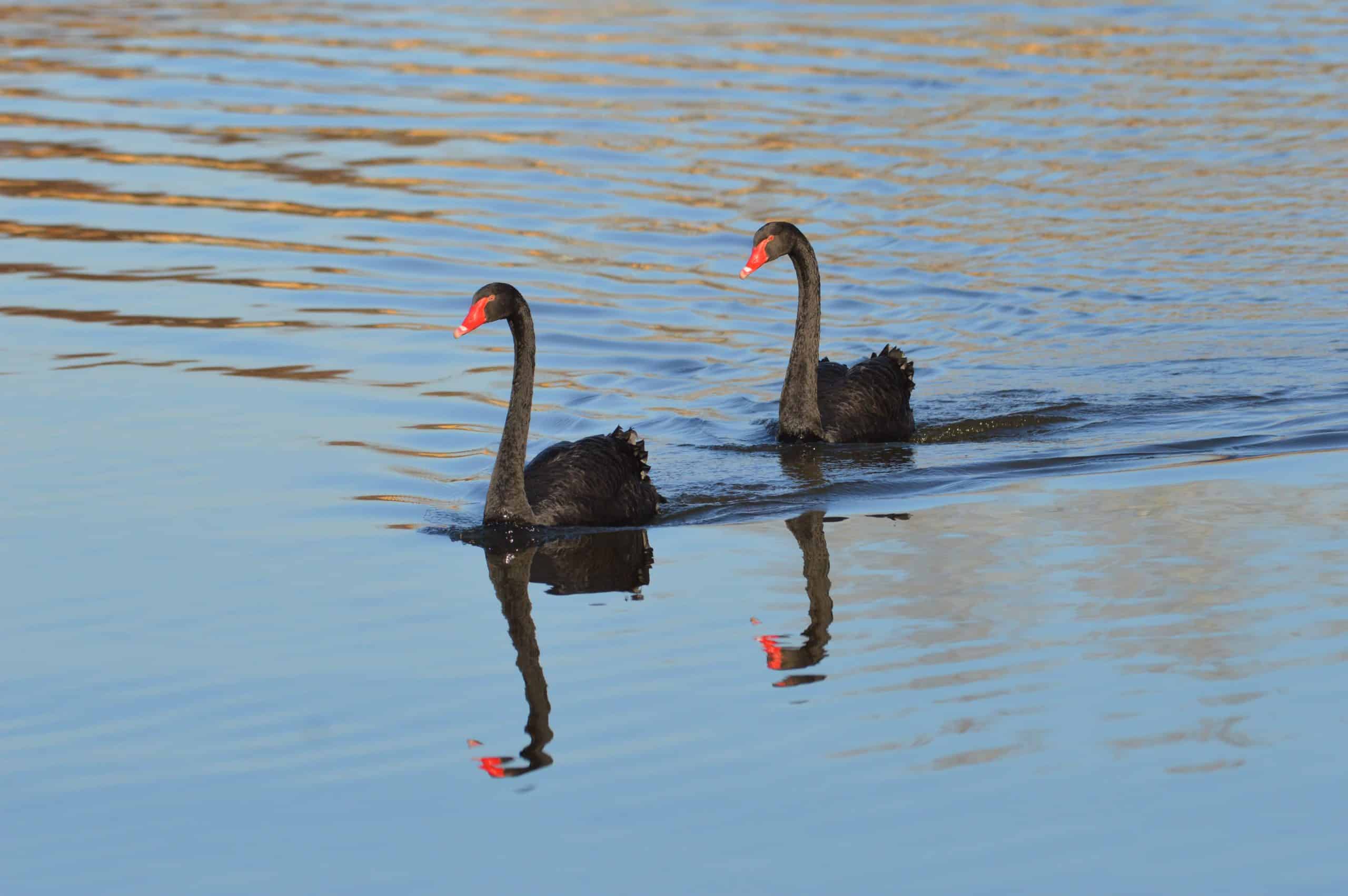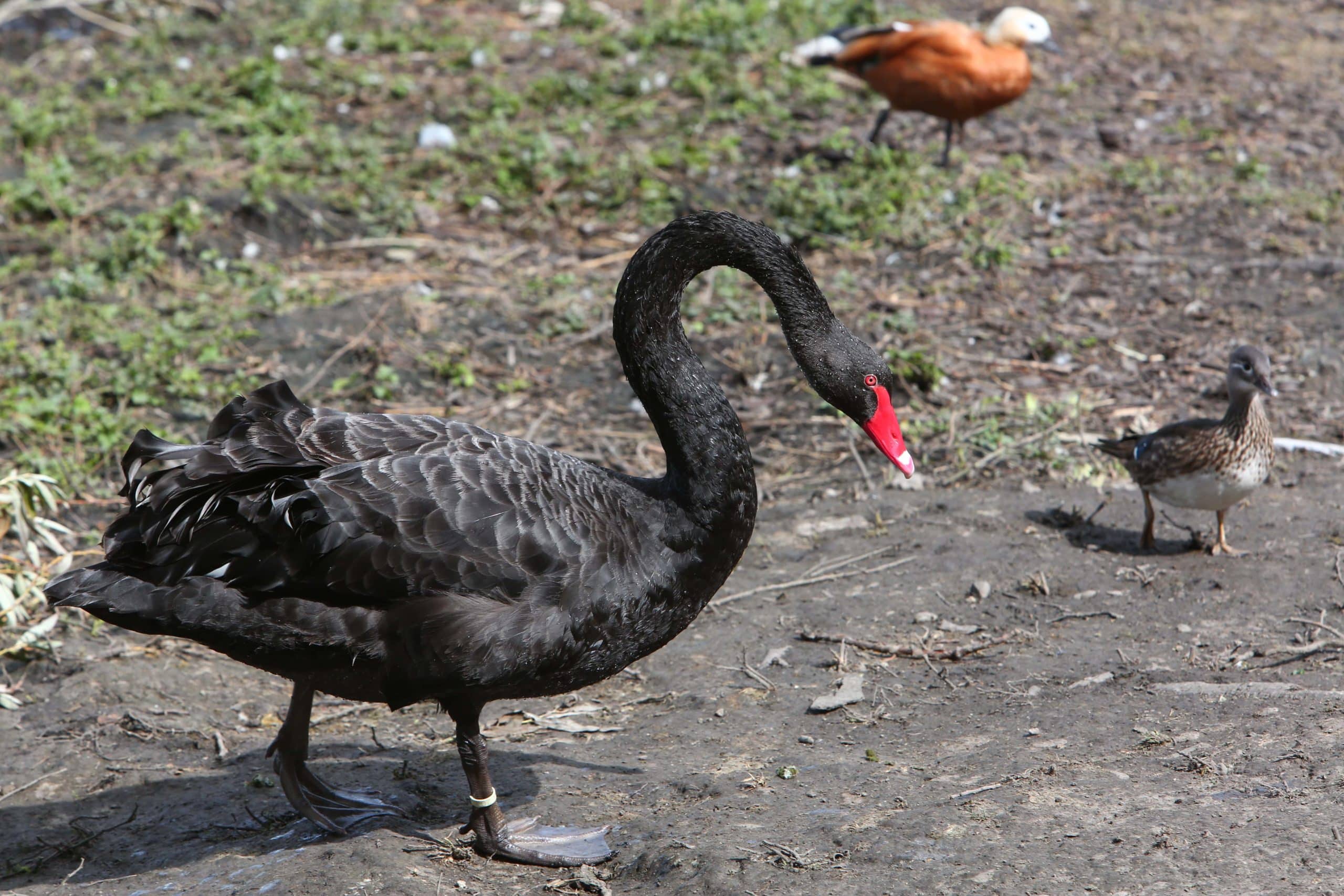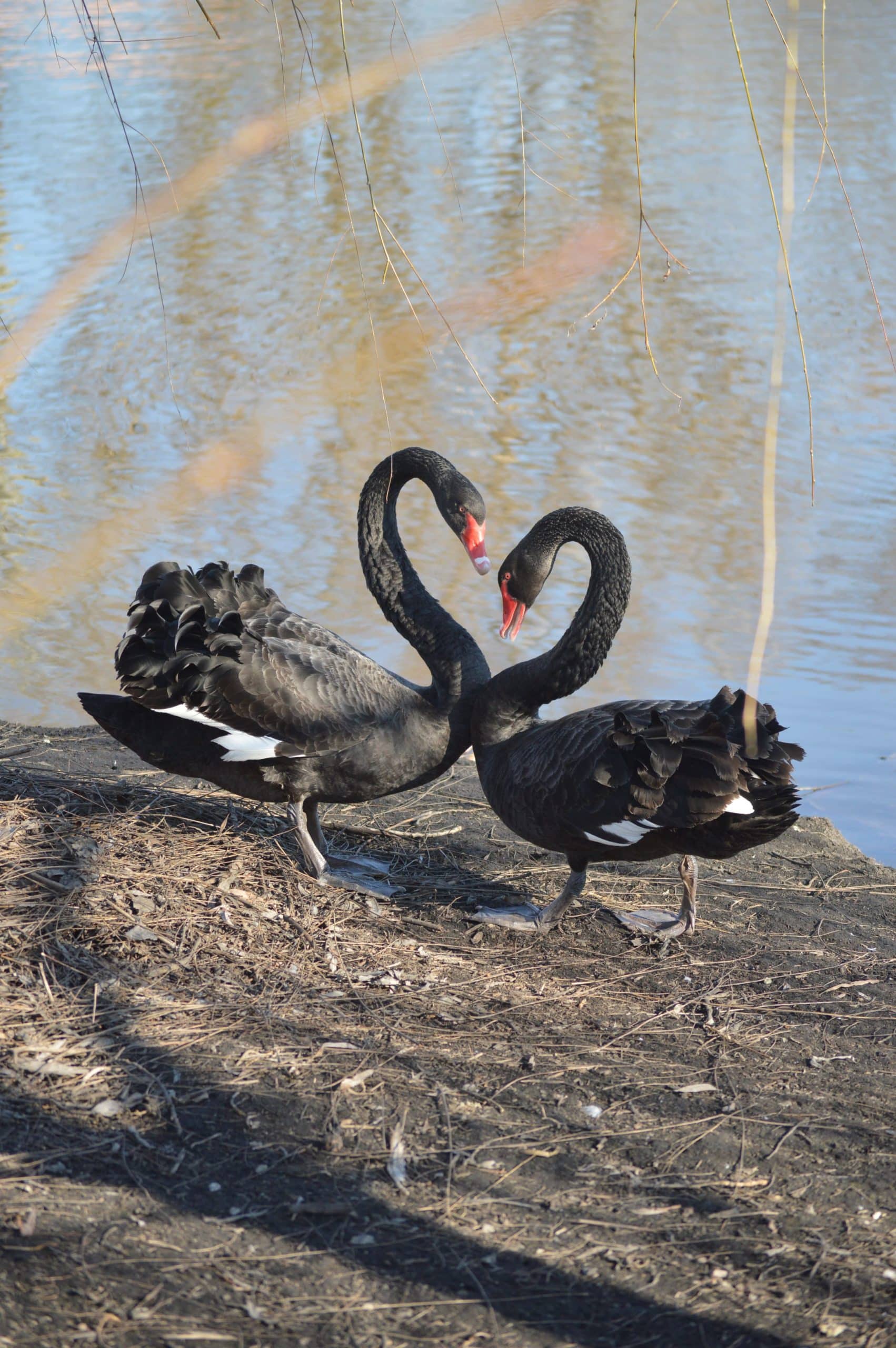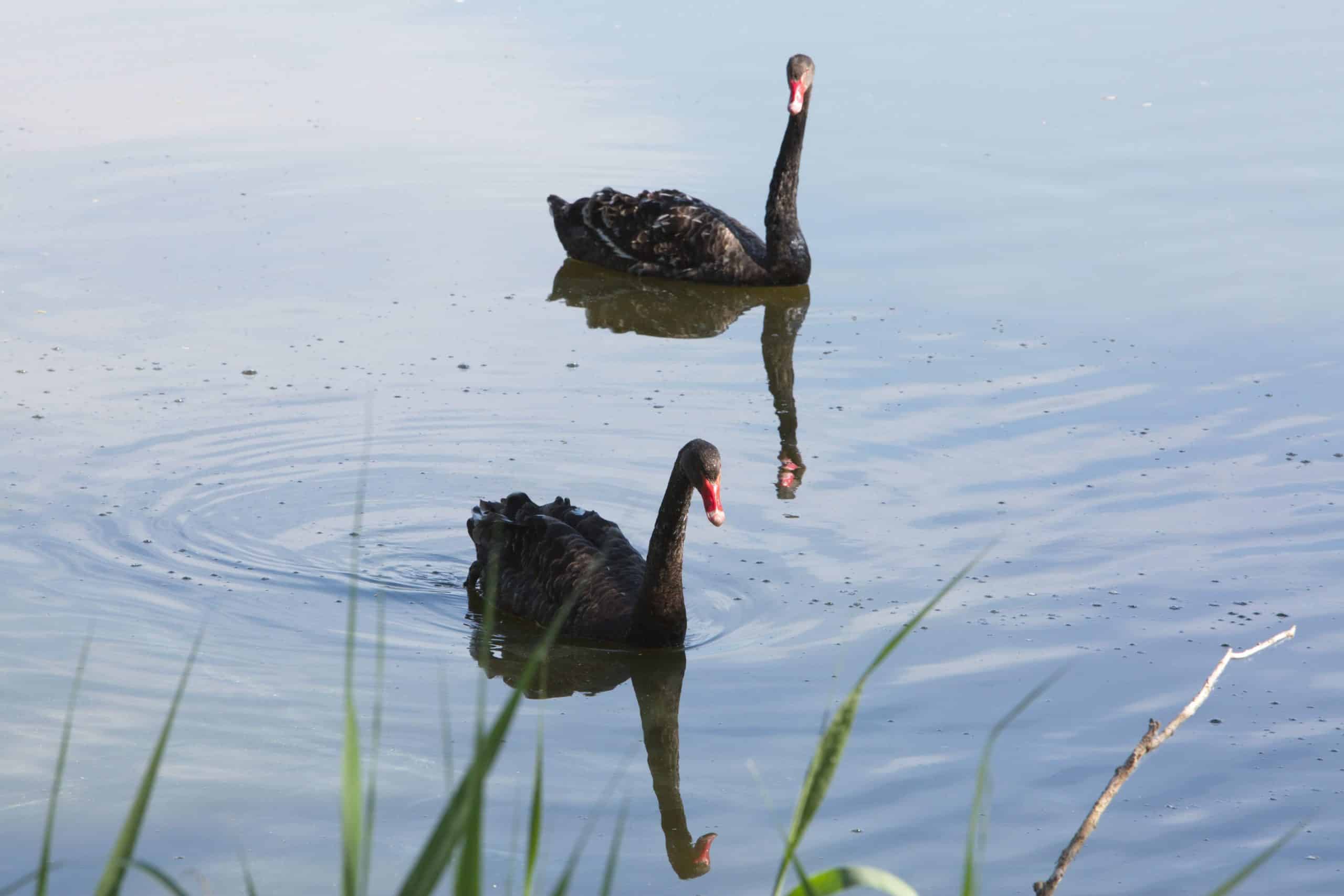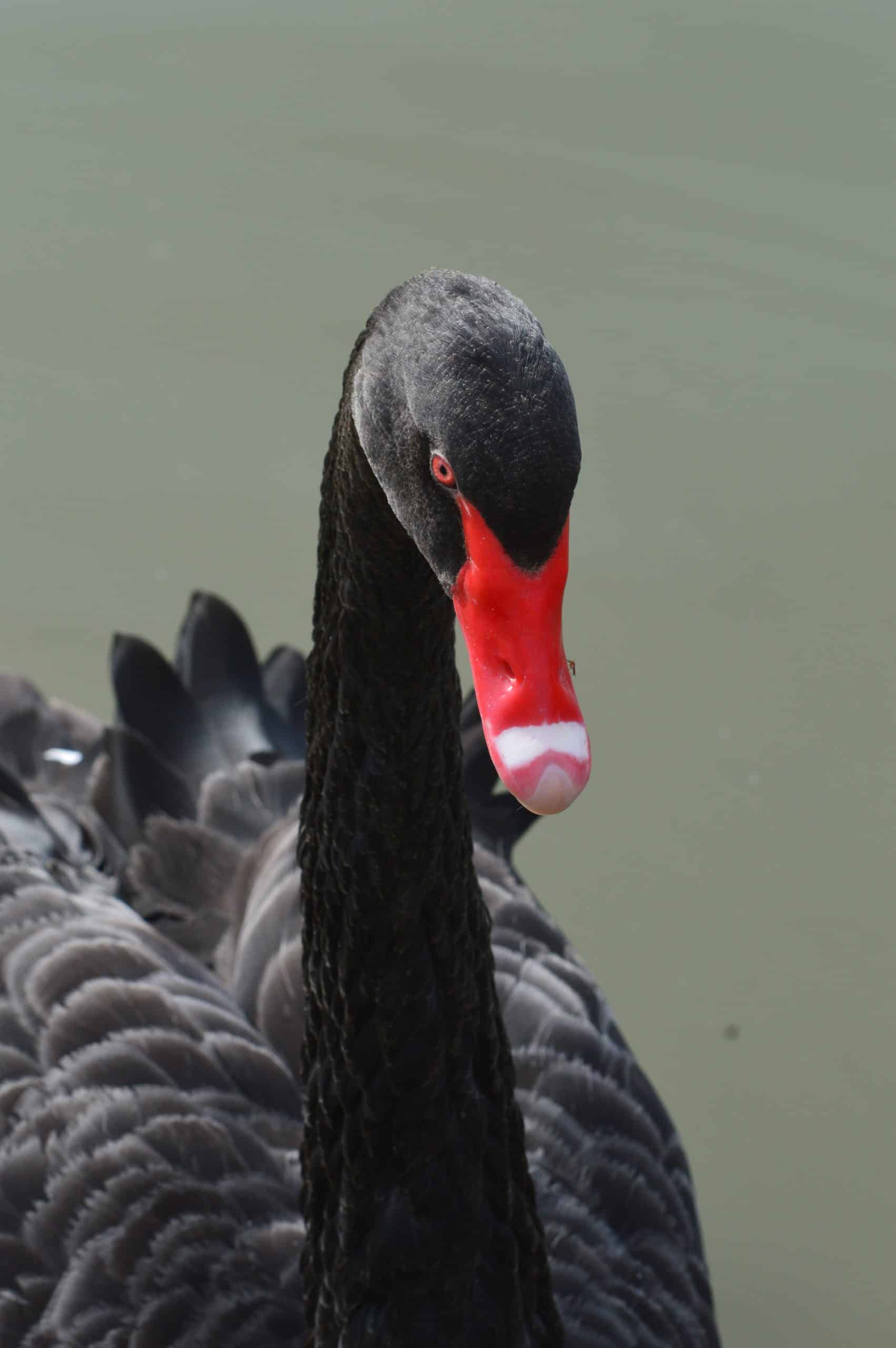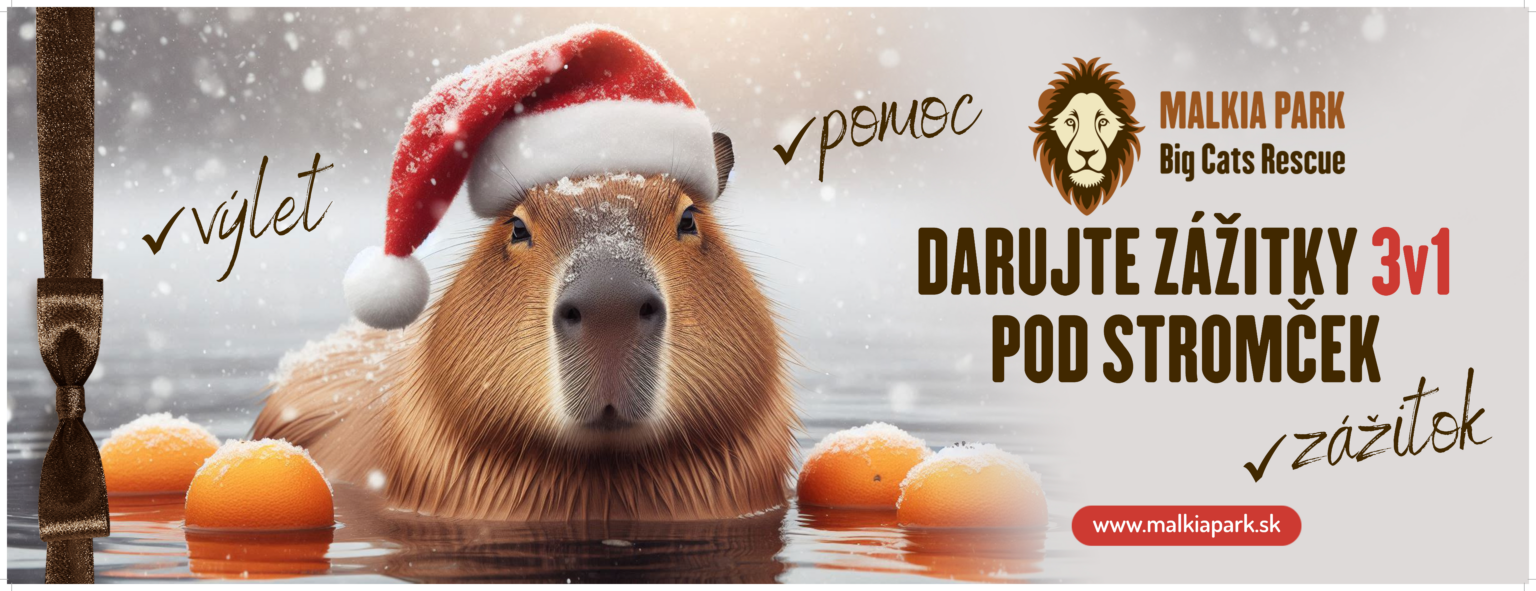They are large, almost completely black birds with the longest necks of all swans compared to their body size. Their characteristic black feathers are edged with grey feathers and ruffled on the wings. The bright white flight feathers are only visible during the bird’s flight. The beak is large with an orange-red and white band at the tip.
It feels good almost anywhere that is sufficiently humid. It is an excellent flyer, capable of flying across the entire Australian continent with occasional stops where it only needs temporary water sources. In particularly favourable locations, swans can stay all year round. They are one of the most adaptable birds.
It builds a large nest so that one side of it almost touches the water. Occasionally, it nests in wetlands or builds its nest floating on water. It is less aggressive towards members of its own species than other swans and sometimes as many as 10,000 individuals nest in one place with regular nest spacing. The young are born at two- to three-day intervals. One parent leads them to the water while the other takes care of the rest of the clutch. When all the young hatch, the whole family meets on the water.
It is not rare to see a nest full of little swans floating on the surface of the lake during the breeding season. The black swan usually attaches its nest to plants on the shore, but it happens that the nest tears off.
The first black swans were introduced to Europe in the mid-18th century. In England, they were first regarded as a symbol of bad luck.
Black swans usually migrate at night, in regular formations and at high altitudes.


